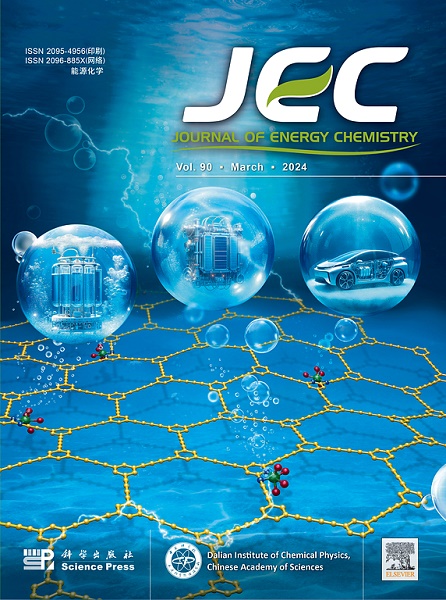使用深度学习和数据压缩技术的电池组容量预测:一种用于现实世界车辆的方法
IF 13.1
1区 化学
Q1 Energy
引用次数: 0
摘要
准确预测电动汽车电池组容量对于确保电动汽车安全性和优化电动汽车性能至关重要。尽管在使用实验室数据预测电池容量方面进行了广泛的研究,但由于复杂的操作条件和现实环境中不规律的电动汽车使用情况,根据现场数据预测车载电池组的容量仍然具有挑战性。现有的方法大多依赖于从原始数据中提取健康特征参数来预测车载电池组的容量,然而,选择特定参数往往会导致关键信息的丢失,从而降低了预测的准确性。为此,本文引入了一种结合深度学习和数据压缩技术的新框架,以准确预测车载电池组容量。提出的数据压缩方法将每月的电动汽车充电数据转换为特征图,在保留基本数据特征的同时减少了原始数据量。针对现场数据中容量标注缺失的问题,提出了一种容量标注方法,通过对安培小时积分公式进行变换,应用线性回归计算电池月容量。随后,提出深度学习模型构建容量预测模型,利用历史月份的特征图预测未来月份的电池容量,从而实现准确的预测。使用20辆电动汽车的现场数据对所提出的框架进行了评估,平均绝对误差为0.79 Ah,平均绝对百分比误差为0.65%,均方根误差为1.02 Ah,突出了其在实际电动汽车应用中的潜力。本文章由计算机程序翻译,如有差异,请以英文原文为准。

Battery pack capacity prediction using deep learning and data compression technique: a method for real-world vehicles
The accurate prediction of battery pack capacity in electric vehicles (EVs) is crucial for ensuring safety and optimizing performance. Despite extensive research on predicting cell capacity using laboratory data, predicting the capacity of onboard battery packs from field data remains challenging due to complex operating conditions and irregular EV usage in real-world settings. Most existing methods rely on extracting health feature parameters from raw data for capacity prediction of onboard battery packs, however, selecting specific parameters often results in a loss of critical information, which reduces prediction accuracy. To this end, this paper introduces a novel framework combining deep learning and data compression techniques to accurately predict battery pack capacity onboard. The proposed data compression method converts monthly EV charging data into feature maps, which preserve essential data characteristics while reducing the volume of raw data. To address missing capacity labels in field data, a capacity labeling method is proposed, which calculates monthly battery capacity by transforming the ampere-hour integration formula and applying linear regression. Subsequently, a deep learning model is proposed to build a capacity prediction model, using feature maps from historical months to predict the battery capacity of future months, thus facilitating accurate forecasts. The proposed framework, evaluated using field data from 20 EVs, achieves a mean absolute error of 0.79 Ah, a mean absolute percentage error of 0.65%, and a root mean square error of 1.02 Ah, highlighting its potential for real-world EV applications.
求助全文
通过发布文献求助,成功后即可免费获取论文全文。
去求助
来源期刊

Journal of Energy Chemistry
CHEMISTRY, APPLIED-CHEMISTRY, PHYSICAL
CiteScore
19.10
自引率
8.40%
发文量
3631
审稿时长
15 days
期刊介绍:
The Journal of Energy Chemistry, the official publication of Science Press and the Dalian Institute of Chemical Physics, Chinese Academy of Sciences, serves as a platform for reporting creative research and innovative applications in energy chemistry. It mainly reports on creative researches and innovative applications of chemical conversions of fossil energy, carbon dioxide, electrochemical energy and hydrogen energy, as well as the conversions of biomass and solar energy related with chemical issues to promote academic exchanges in the field of energy chemistry and to accelerate the exploration, research and development of energy science and technologies.
This journal focuses on original research papers covering various topics within energy chemistry worldwide, including:
Optimized utilization of fossil energy
Hydrogen energy
Conversion and storage of electrochemical energy
Capture, storage, and chemical conversion of carbon dioxide
Materials and nanotechnologies for energy conversion and storage
Chemistry in biomass conversion
Chemistry in the utilization of solar energy
 求助内容:
求助内容: 应助结果提醒方式:
应助结果提醒方式:


